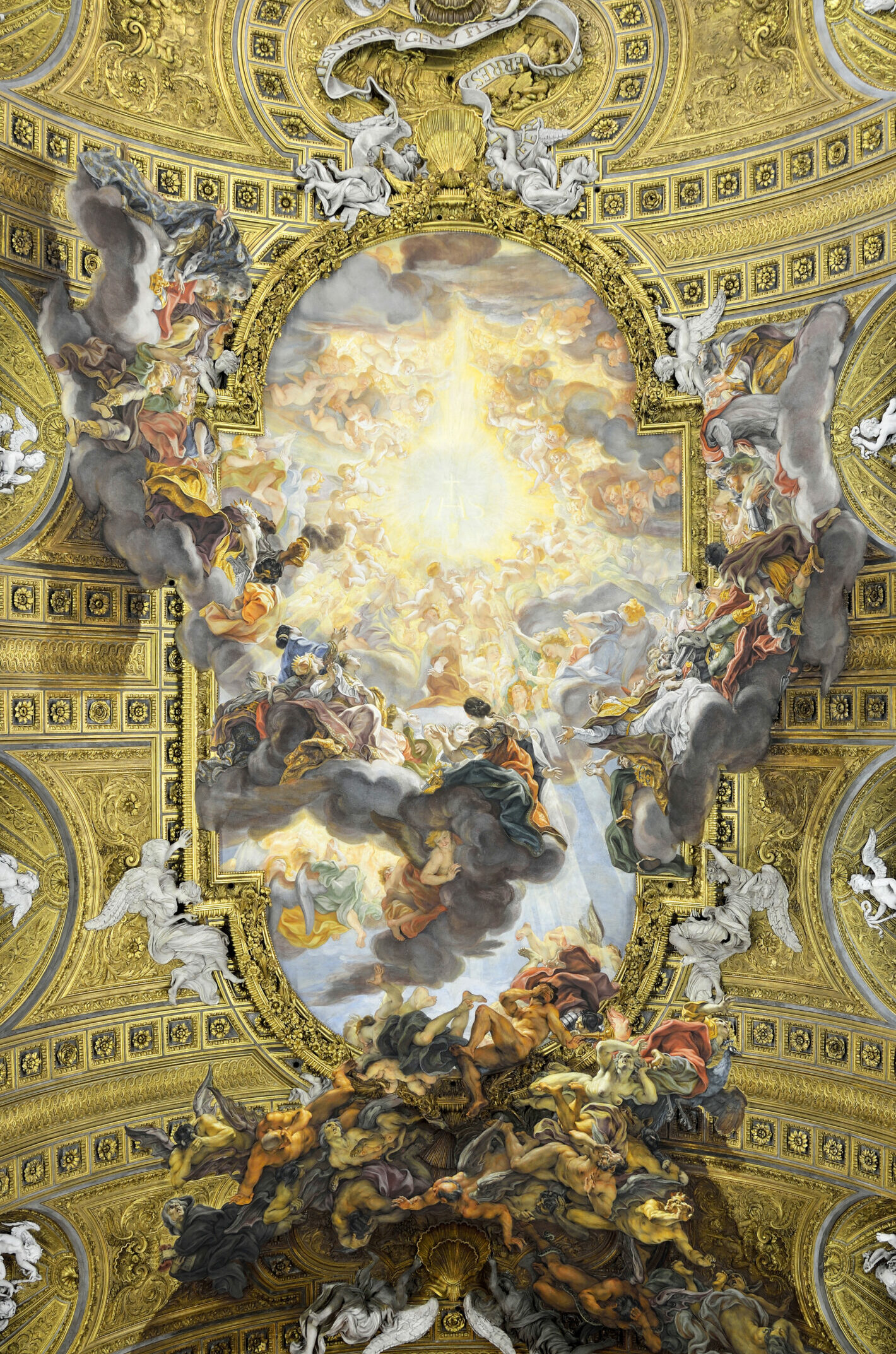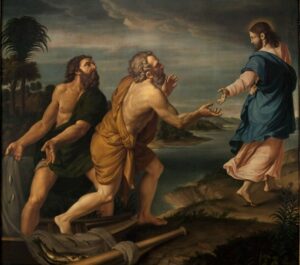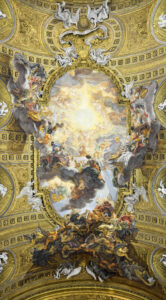
Fifth Sunday in Lent: a time of prayer and mercy
Mercy in the Gospel: Paths of Faith and Art between Mercy and Redemption
Each Gospel passage shows a concatenation of moments of Mercy. This passage tells us about some Greeks who ask Philip, who probably knew their language, to see Jesus. Philip, diligent as always, takes action to grant that wish and together with Andrew goes to Jesus. Leading those who seek God to Jesus is already an act of mercy toward man.

This painting executed for the cathedral of Mantua in 1798 by the Mantuan painter Felice Campi (1746/1817), is an accurate copy of the stolen and later lost 16th-century painting by Fermo Ghisoni. Here Jesus is depicted on the shores of the lake, calling the first two disciples and inviting them to follow him. It is not Philip but Andrew and Peter, however, what is striking is the attitude of Christ who with his gesture invites and hastily sets off, so much so that his feet hardly seem to touch the ground . Surely Philip too must have had the same charitable impulse in granting and bringing those pagans to the Master. The depiction also seems to illustrate well the words that Jesus then says in response to Philip : “If anyone wants to serve me, let him follow me, and where I am, there will my servant be also.” Three moving characters, strongly expressive, in a landscape where warm colors become the protagonists of a soothing environment.

Jesus again says something that ,at the moment, might have seemed discordant in that context :” if the grain of wheat, fallen into the ground does not die, it remains alone, if it dies , it produces much fruit.” Probably to indicate his passion , death and resurrection that would soon take place. The scene of the sower has been immortalized by some great artists such as Jean Francois Millet ( 1814/1875) , who knew well the reality of life in the fields. Of peasant origin, he personally devoted himself to working the land to support his family of eight children, a condition accepted humbly and religiously because for him that was God’s will. There is no rebellion or crudity in his work , but a sweet and resigned feeling that joins with the slow and continuous renewal of nature, which needs time and rotting in the soil for the ear to sprout. Here the author has captured the sacred and solemn gesture of the farmer, made with the hope that that sown grain of wheat, in the large plowed field, will grow and from rotting go on to the golden and rich ear.

The passage continues with an unthinkable and astounding event, for there came a voice from heaven:” I have glorified him and will glorify him again.” A difficult theme to depict, but what Gaulli (1638/1709) executed for the Gesù church in Rome between 1661 and 1679 has no equal or comparison. In keeping with the Baroque style, here painting, sculpture, and architecture blend into a marvelous whole with such perfect mastery that observers are more than astonished. The subject is precisely the adoration and glorification of the name of Jesus.” Making himself obedient unto death and death on a cross for this God exalted him…and let every tongue proclaim that Jesus Christ is Lord , to the glory of God the Father” ( letter to the Philippians). These are some of the words written on a ribbon held up by the angels who fit between these moving, ascending and descending figures. At the apex of the central light source is the very monogram “IHS” and from there is a whole series of holy figures looking upward . At the bottom the damned , with tormented faces that gradually become monstrous, emerge from the scene, unable to sustain the divine light of Jesus’ name. Perspective abandons traditional rules and multiplies space, the figures float in a centrifugal motion rich in precious details. In a spectacular illusionistic effect, the protagonist also becomes the golden light of the sky, which enlivens and enhances each element in its colors.

This grand, scenic composition not only astounds every viewer , but also makes one reflect on the glory that God has destined for those who with faith worship and hope in Him. This is one of the greatest evidences of God’s mercy toward the repentant sinner.
Paola Carmen Salamino
